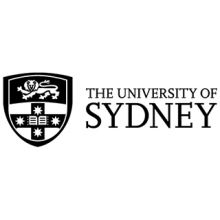Australian universities have focused excessively on international education under the mistaken assumption that overseas students are more commercially valuable than domestic ones, a new book argues.
University of Sydney sociologist Salvatore Babones says that on a per-student basis, local students have consistently proven more lucrative than foreigners. The claim, explained in his book Australia’s Universities: Can They Reform?, contradicts the widely accepted notion that international students cross-subsidise their Australian peers by paying three or four times as much in fees.
Dr Babones says such comparisons overlook Canberra’s investment in the education of Australians through its support for student loans and research, along with relatively small allocations from state governments.
He argues that universities’ research funding should be factored in because its primary purpose is to benefit Australian students by ensuring that they are taught by research-active academics. When all these forms of finance are thrown into the mix, domestic students have consistently outperformed overseas students in earning money for their institutions.
This has occurred despite international students’ disproportionate share of enrolments in postgraduate courses, Group of Eight institutions and other capital city universities, all of which tend to be relatively expensive.
Dr Babones says that between 2002 and 2019, each domestic student place attracted an average of A$28,680 (£15,500) a year compared with A$22,005 for international places.
“By paying an average of 23.3 per cent less per place, international students were, in effect, free riding on infrastructure paid for primarily by domestic students,” the book says. “Domestic students have been subsidising international students, not the other way around.”
Dr Babones supported the argument that overseas students’ presence contributed to the learning experience for locals. But he said that Australian universities were overdoing it by recruiting up to half of their students from abroad, compared with 19 per cent at the most internationalised US institution.
“We have business programmes that are over 80 per cent international,” he told Times Higher Education. “Is that diversifying? If anything, they need more domestic students.”
He said that international students had once been considered a minor add-on to primarily domestic classes, so there was no expectation that they contribute to universities’ running costs. “This makes perfect sense if you go back 20 or 25 years. Once you’re at the point where international students are one-third of your student body, they’re no longer just a marginal enrichment activity.”
His main message is that universities have “warped their entire missions” so that they can hire people to improve their rankings performance. “International student income is preferred by universities because it is not benchmarked for specific purposes, which means they can use the money to buy highly cited researchers primarily from overseas – largely, it appears, from China.
“Those researchers often get Chinese Thousand Talents Programme [TTP] funding, which further subsidises Australian universities. All this is irrelevant to [universities’] main mission, which is supposedly to educate Australian students.”
Dr Babones said he could only speculate about who had TTP contracts, with academics under no obligation to disclose connections with the scheme. He said that it was “entirely appropriate” for academics with Chinese heritage “to want to give back” to their homeland. “The danger is that Australian universities make themselves complicit and become subject to Chinese influence, because they want the support but they want it kept secret.”
The book dismisses the “received wisdom” that Australian university funding is “woefully inadequate” as the result of “deceptive cherry-picking” of Organisation for Economic Co-operation and Development (OECD) data on direct government grants to institutions.
If all per-student forms of support are factored in, the book says, public spending on tertiary education stands at 1.1 per cent of gross domestic product – above the OECD and European Union averages of 1 per cent. “If it really is true that Australia’s universities are chronically starved of funding, it may be because they keep seeking low-margin, high-volatility international growth.
“A saner future would see them consolidate around their high-margin, low-volatility domestic student base.”
Dr Babones acknowledged methodological problems in his calculations, such as the failure to investigate whether students’ concentrations in particular fields of study explained the revenue discrepancies – a shortcoming he blamed on a lack of available data.
His calculations also disregard research funding as a component of the revenue attracted by international students, even though they – like their domestic counterparts – arguably benefit from exposure to research-active academics.
Dr Babones defended this approach, saying the purpose of commonwealth funding was explicitly to benefit Australian students. “We have to ask, does the Australian government have an interest in funding the better education of international students?”
Register to continue
Why register?
- Registration is free and only takes a moment
- Once registered, you can read 3 articles a month
- Sign up for our newsletter
Subscribe
Or subscribe for unlimited access to:
- Unlimited access to news, views, insights & reviews
- Digital editions
- Digital access to THE’s university and college rankings analysis
Already registered or a current subscriber? Login










